Bird Landscaping: Grow Plants to Help Backyard Birds
Updated: Jan. 23, 2024
Grow bird-friendly plants for food and shelter. For bird landscaping, include berry bushes, evergreens, flowering trees and native plants.
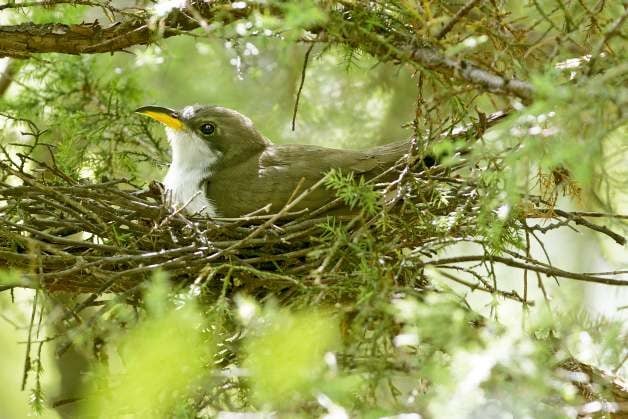
Try your hand at bird landscaping, and you’ll quickly learn that landscaping is for the birds—literally! Planting with birds in mind pays off fast, attracting birds in greater numbers with more variety and longer visits from your feathered friends. It’s easy, too. All it takes is looking at your yard from a bird’s point of view.
You’ll have greater success at attracting your favorite species when you realize two things–finding food and not getting eaten–are the two biggest issues for birds. Food is the first step to winning the hearts of birds, and keeping a feeder makes you feel good, too. To really bring in the birds, you need to make them feel at home in your yard. And the way to do that is by growing plants for nesting birds.
Bird landscaping or birdscaping, as some people call it, is a lot simpler than it sounds. All it takes are some common sense and a few lessons from the very best gardener of all, Mother Nature.
On This Page
Bird Landscaping Basics
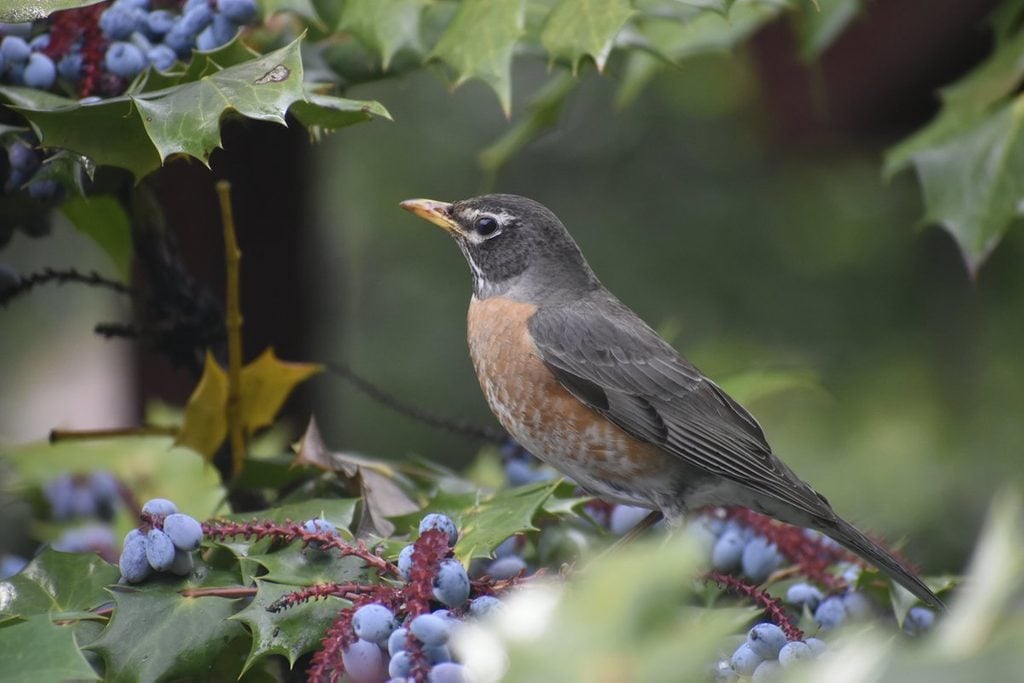
Imitate natural wild areas, and you’ve got it made. You could just let your whole backyard go wild; birds would heartily approve. But most of us like to keep some sense of order, so try these bird landscaping tricks to keep both you and your feathered friends happy.
- Plant shrubs for nesting birds in groups of three or more, to build larger areas of cover.
- Spread a thick layer of mulch beneath and between shrubs. Instantly, you’ve made an inviting foraging area for towhees, robins, native sparrows and juncos.
- Add a hedge along a boundary or your privacy fence. Include thorny shrubs, such as roses or flowering quince, to provide tempting nesting places for brown thrashers, gray catbirds, cardinals and others.
- Plant evergreen shrubs and trees such as holly, rhododendron, and spruce to offer shelter from the weather.
- Vary the height of your flower beds and boost their bird appeal by planting small trees, such as dogwood and redbud, right in the beds.
The Perfect Plants for Your Bird Landscape
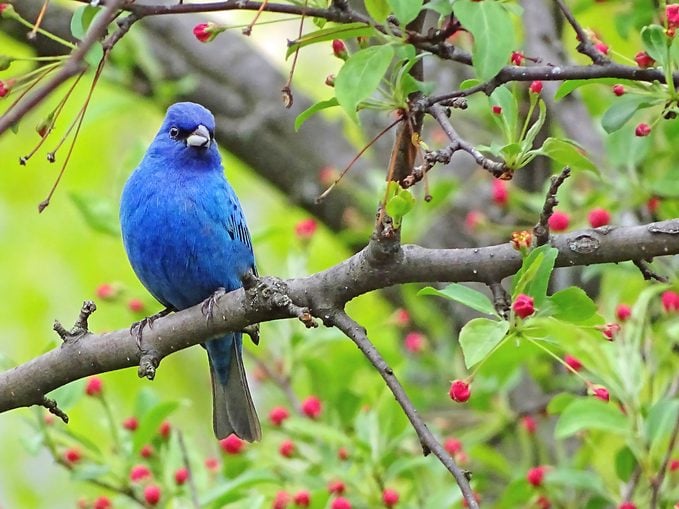
You can find hundreds of specific plants to attract birds, but how do you get started finding them? This general list will steer you in the right direction.
- Native trees or shrubs
- Flowering crabapples, hawthorns
- Fruit trees or bushes
- Junipers
- Pines or spruces
- Other flowering trees and shrubs
Trees for Birds That Eat Insects
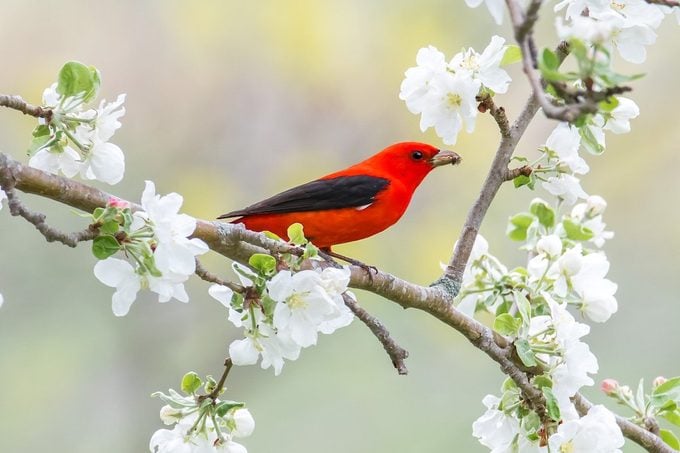
Talk about multitasking—the plants in our yards do it all. They supply vital protective cover, shelter birds in bad weather and serve as nesting places.
And that’s not all. Many plants also serve up enough natural food—seeds, fruit, berries and especially bugs—to keep birds coming back day after day.
Insects are the natural food our feathered friends rely on year-round. A big banquet of them will draw in birds of all kinds, just as feeders do.
To boost your bugs—yep, more insects is a good thing, if you want birds—add spring-flowering trees to your yard. Crabapples and other fruit trees bloom at migration time. That makes them an inviting pit stop for traveling warblers, vireos, gnatcatchers, tanagers, orioles and other birds that recognize the opportunity for an insect feast.
Native Plants for Birds That Eat Caterpillars
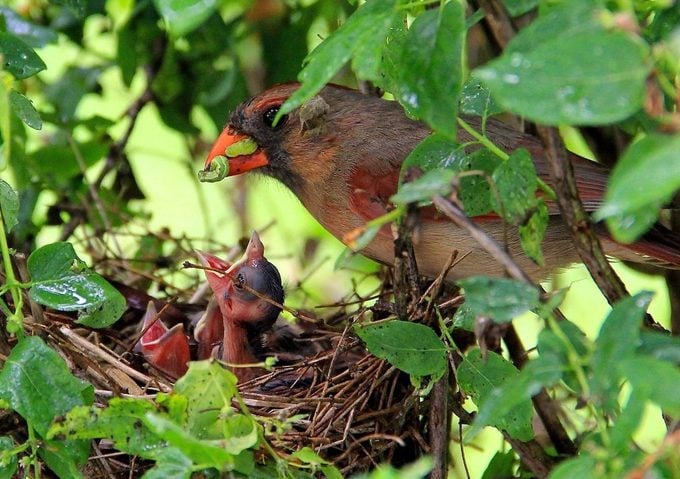
Caterpillars are another can’t-miss menu item for birds. They’re at their peak during nesting season, just in time to stuff down a bunch of gaping beaks. No need to research good plants for caterpillars—just go native. Many native trees, shrubs and other plants serve as hosts for egg-laying butterflies or moths, as well as nurturing a plethora of other insects.
Trees and Bushes for Birds That Eat Berries
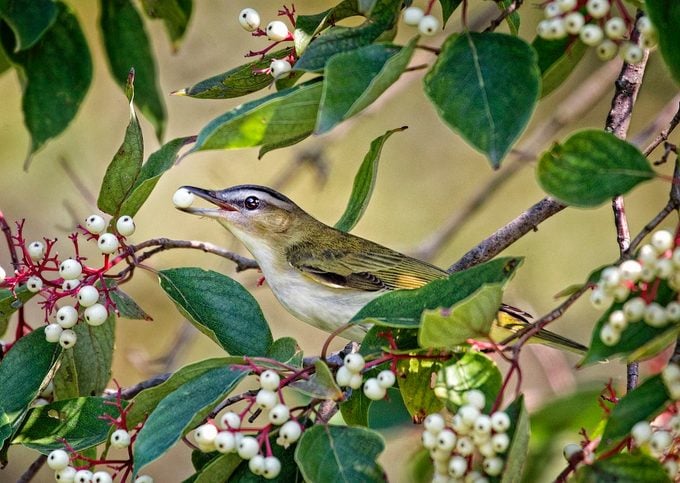
Ask any bird lover what plants are best for nesting birds, and the answer is likely to be berry bushes. A hedge of mixed berry bushes is irresistible to bluebirds, thrashers, catbirds and other friends. Groups of shrubs with just a hop, skip and jump between them are also great.
Birds somehow know when the fruit crop is ready, and it’s quite a thrill when our favorite songbirds start winging their way in from miles around.
Still, it takes only a week or so until the birds have gobbled every berry. The show is over until the next fruit or berry in your yard starts to ripen.
I wouldn’t be without berry bushes or fruit trees in my yard. But I look beyond the harvest, and so do the birds. Any fruit or berry we plant is going to be home to bugs. Even if they escape our notice, birds will find them. Plus, like any plant we find a place for, berry bushes will add to the available cover, and maybe even cradle a cardinal nest come spring.
Bird Landscaping for Predator Protection
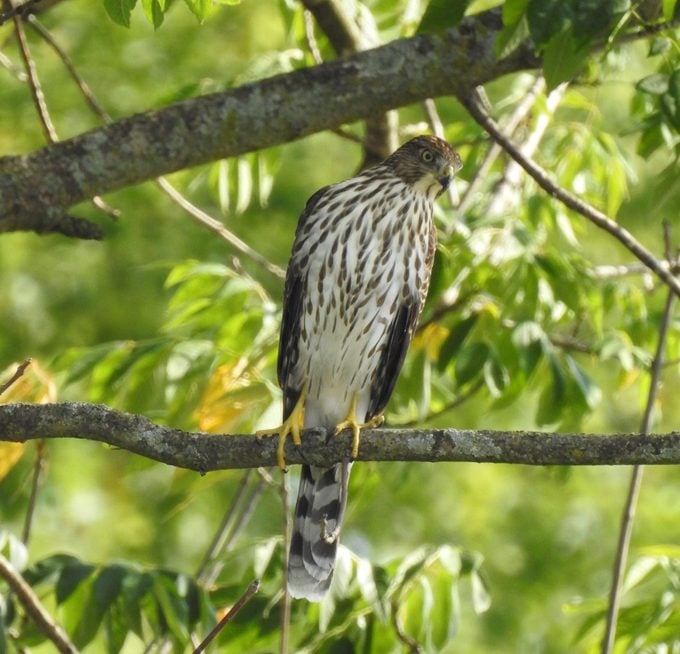
You can learn a lot about planning for birds just by watching them in their natural surroundings. Observe them in your yard, and you’ll see that very few of them spend time out in the open. Most of our friends stay under cover as much as they can to boost their chances of survival. They alight in trees, gather in bushes or scoot through the garden looking for food. The sheltering branches or stems protect them from the hungry eyes of predators.
A stalking cat may rush a robin on the lawn. A hungry hawk may drop from the sky at any moment. Vulnerable nestlings, eggs or even parent birds on the nest may be the target of a prowling raccoon or slithering snake.
So think like a wary bird and set up stepping-stones of shrubs, trees, grasses and flower beds. Go horizontal with corridors of plants so birds can move easily about your yard.
But think vertically, too, because birds move up and down as well as sideways. You can shoehorn in a surprising amount of cover by layering small trees, shrubs, ferns and ground covers near big trees, and by adding an arbor or trellises for vines and roses. Your backyard will soon look like an oasis, especially from the air.
Check out the best plants that attract birds in all seasons.
Skip Pesticides
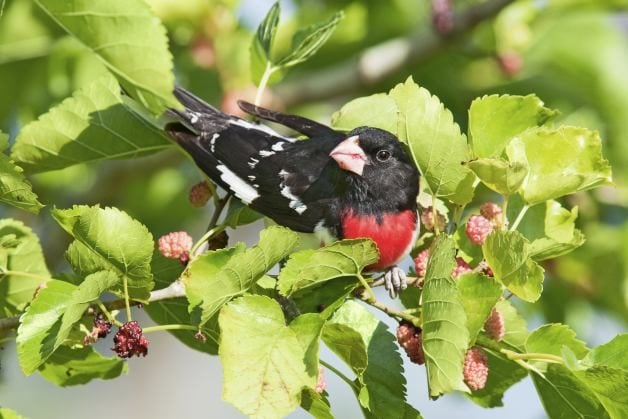
Of course, you’ll want to avoid pesticides as much as possible in your bird paradise. Just think of those pesky bugs as bird food, and be patient until the troops arrive. Chickadees, wrens and vireos will help you out with aphids. Cardinals and rose-breasted grosbeaks snap up potato beetles. And starlings are your best friends when it comes to Japanese beetles: They’re searching for grubs when they waddle about, stabbing the ground.
Don’t Clean Up Too Much
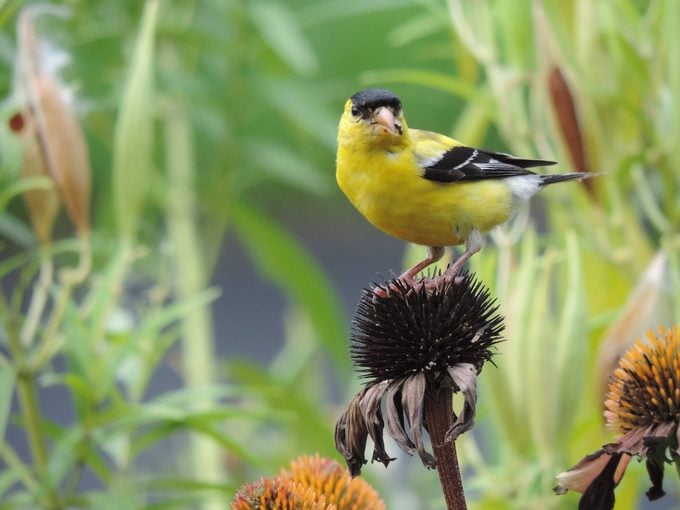
While most gardeners strive for neatness, birds like messy surroundings, so bird landscaping focuses on finding a happy medium—a natural look that will coax birds into lingering and possibly even nesting. Let perennials, shrubs and other plants knit together, instead of keeping bare space around every plant. Allow the dead leaves to lie beneath shrubs and hedges as an insect-rich mulch for gray catbirds, thrashers, wrens and other friends to investigate.
Hold off on cutting back flower beds until spring so goldfinches, titmice, doves, quail and other birds can shelter in them when searching for seeds and insects in winter. Instead of getting out the clippers every few months, learn to love the natural look of a free-form hedge. Birds will appreciate it. And you’ll appreciate the birds bringing life to your yard, every season of the year.
Why Trust Us
For nearly 30 years, Birds & Blooms, a Trusted Media Brand, has been inspiring readers to have a lifelong love of birding, gardening and nature. We are the #1 bird and garden magazine in North America and a trusted online resource for over 15 million outdoor enthusiasts annually. Our library of thousands of informative articles and how-tos has been written by trusted journalists and fact-checked by bird and garden experts for accuracy. In addition to our staff of experienced gardeners and bird-watchers, we hire individuals who have years of education and hands-on experience with birding, bird feeding, gardening, butterflies, bugs and more. Learn more about Birds & Blooms, our field editor program, and our submission guidelines.
